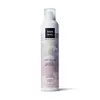What's inside
What's inside
 Benefits
Benefits

 Concerns
Concerns

 Ingredients Side-by-side
Ingredients Side-by-side

Isobutane
Propane
Sd Alcohol 40-B
AstringentTapioca Starch
Aluminum Starch Octenylsuccinate
AbsorbentPolymethylsilsesquioxane
Acrylates Copolymer
Magnesium Carbonate
AbsorbentParfum
MaskingPropylene Glycol
HumectantMagnesium Stearate
Cosmetic ColorantPEG-12 Dimethicone
Skin ConditioningBambusa Vulgaris Stem Extract
Volcanic Ash Extract
Skin ConditioningHedychium Coronarium Root Extract
MaskingPalmaria Palmata Extract
Skin ProtectingHelianthus Annuus Seed Oil
EmollientIsobutane, Propane, Sd Alcohol 40-B, Tapioca Starch, Aluminum Starch Octenylsuccinate, Polymethylsilsesquioxane, Acrylates Copolymer, Magnesium Carbonate, Parfum, Propylene Glycol, Magnesium Stearate, PEG-12 Dimethicone, Bambusa Vulgaris Stem Extract, Volcanic Ash Extract, Hedychium Coronarium Root Extract, Palmaria Palmata Extract, Helianthus Annuus Seed Oil
Hydrofluorocarbon 152a
Dimethyl Ether
SolventAlcohol Denat.
AntimicrobialVp/Va Copolymer
Zeolite
AbsorbentSilk Powder
Skin ConditioningHelianthus Annuus Seed Extract
Skin ConditioningHydrolyzed Wheat Protein
Skin ConditioningGlycerin
HumectantPEG-12 Dimethicone
Skin ConditioningPhenethyl Benzoate
EmollientPvp
Emulsion StabilisingParfum
MaskingLinalool
PerfumingBenzyl Benzoate
AntimicrobialHexyl Cinnamal
PerfumingButylphenyl Methylpropional
PerfumingLimonene
PerfumingIngredients Explained
These ingredients are found in both products.
Ingredients higher up in an ingredient list are typically present in a larger amount.
Parfum is a catch-all term for an ingredient or more that is used to give a scent to products.
Also called "fragrance", this ingredient can be a blend of hundreds of chemicals or plant oils. This means every product with "fragrance" or "parfum" in the ingredients list is a different mixture.
For instance, Habanolide is a proprietary trade name for a specific aroma chemical. When used as a fragrance ingredient in cosmetics, most aroma chemicals fall under the broad labeling category of “FRAGRANCE” or “PARFUM” according to EU and US regulations.
The term 'parfum' or 'fragrance' is not regulated in many countries. In many cases, it is up to the brand to define this term.
For instance, many brands choose to label themselves as "fragrance-free" because they are not using synthetic fragrances. However, their products may still contain ingredients such as essential oils that are considered a fragrance by INCI standards.
One example is Calendula flower extract. Calendula is an essential oil that still imparts a scent or 'fragrance'.
Depending on the blend, the ingredients in the mixture can cause allergies and sensitivities on the skin. Some ingredients that are known EU allergens include linalool and citronellol.
Parfum can also be used to mask or cover an unpleasant scent.
The bottom line is: not all fragrances/parfum/ingredients are created equally. If you are worried about fragrances, we recommend taking a closer look at an ingredient. And of course, we always recommend speaking with a professional.
Learn more about ParfumPEG-12 Dimethicone is a type of water-soluble silicone. It has skin conditioning and hydrating properties.
According to a manufacturer, this ingredient's stability is decreased by strong acid or alkali.